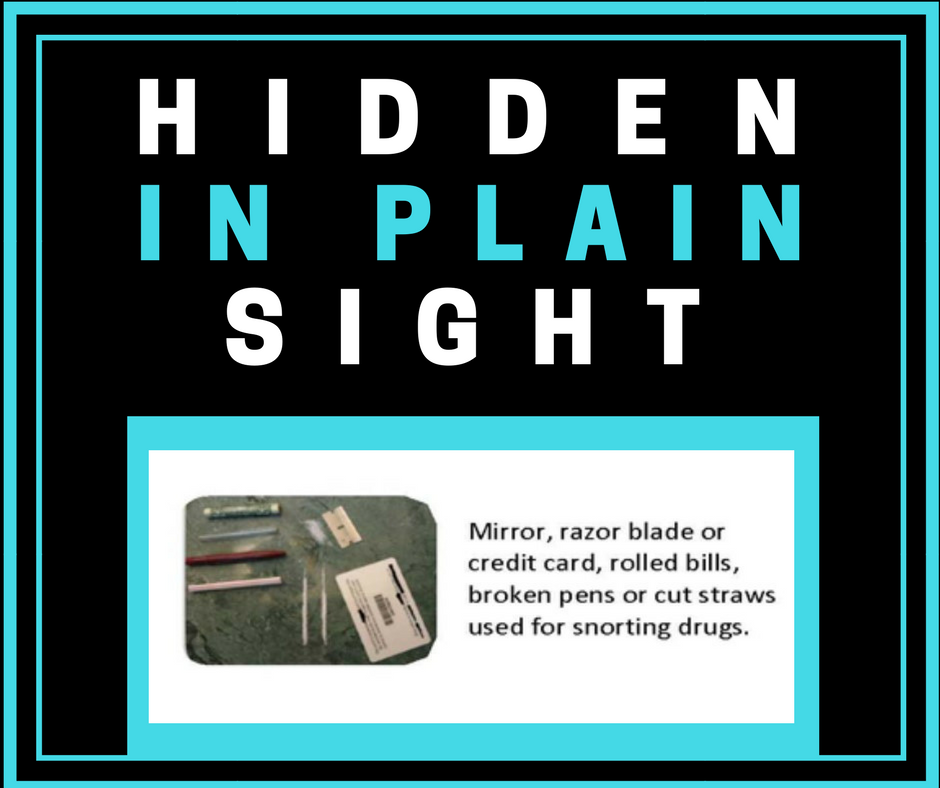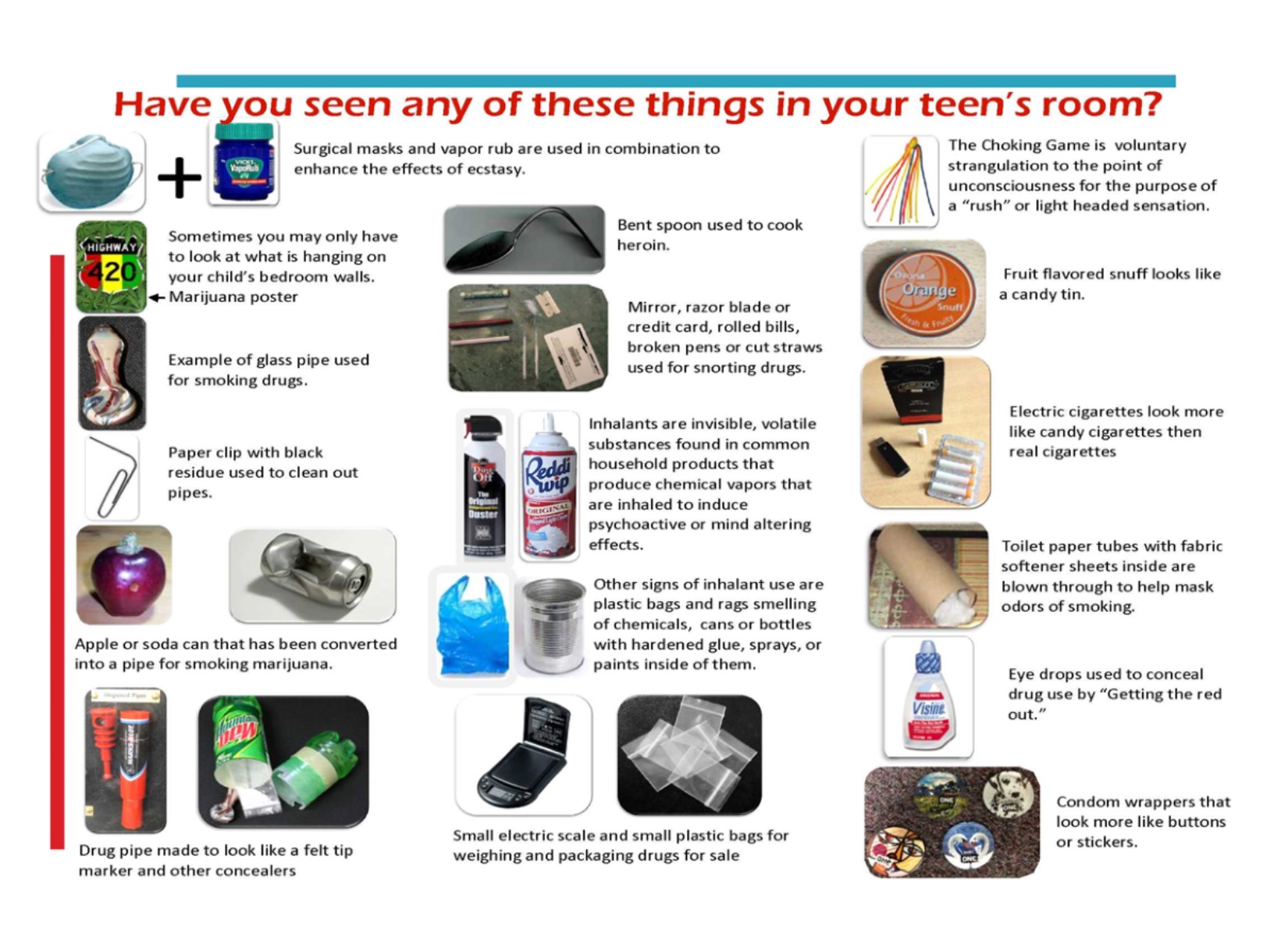The Hidden in Plain Sight Campaign
“Is my child doing drugs?” At some point, many parents ask themselves this question and many struggle with how to investigate whether or not their child is drinking or using drugs without violating their child’s trust. With children experimenting with drugs and alcohol as early as age 12, initiating dialogue about drugs and drinking early, and monitoring your child's interests and belongings is essential.
What is The Hidden in Plain Sight Campaign?
Drinking and drug paraphernalia easily masquerade as every day items. In fact, some pieces of paraphernalia are legal, everyday items used inappropriately. Many young people assume their parents are unaware and will not know what these items are “really” used for and will leave them sitting around making it easy for an informed parent to know whether or not their child is doing drugs.
Every Day Items Used for Getting High
Blue Collar Comedy’s Jeff Foxworthy’s tagline was “There’s your sign”. If your child has a 420 poster, t-shirt, hat, highway sign, etc., there’s your sign, literally.
420, 4:20, and 4/20 refer to April 20, a “counter culture” holiday dedicated to marijuana use. Dab, hash oil, honey oil, wax, 710, budder, and shatter are also slang terms for marijuana embraced by the drug-using community. If you child wears or uses these terms, it could be a sign he or she is affiliated with that community.
Other signs include:
Dryer sheets are used to mask the smell of marijuana.
Sploofs are filters madewith dryer sheets and a toilet paper roll and are used to mask the smell of pot.
Homemade pipes are made with random objects like apples or crushed cola cans. Aluminum foil, water bottles, fruits, and vegetables are commonly used for DIY pipes. The Internet is packed with videos and guides on how to make them. Speaking of the Internet, check your child’s phone and table apps, and browser history.
Cigars can be hollowed out and filled with marijuana to make a blunt.
Hiding Spots for Drug Paraphernalia
Television always shows parents busting kids with a Ziplock bag of pot; however, real hiding spots are much more clever and may include:
The custom can is a dummy aerosol or cleaner can that has a fake bottom or center useful for storing drugs.
Book safes hide drugs.
Optical computer mouse looks like a mouse, but it’s used to store a drug-weighing scale.
“Smokers kits” look like a medical kit or a travel bag, but smokers kits contain things like breath mints, hand sanitizer, and eye drops to hide signs of drug use.
Doob tubes are colorful tubes (like those used in chemistry class) used for odorless marijuana storage.
Incense burners are used to hide the smell of smoke.
Signs of Alcohol Abuse
Kids are equally clever about hiding signs they’re drinking.
Flasks can be disguised as everyday objects like hairbrushes, lotion bottles, and tampon cases.
Gatorade is a convenient mixer for odorless liquors.
Ping-Pong balls could indicate your child is playing beer pong at parties.
Flavored, caffeinated alcoholic beverages look like regular energy drinks, but many have high alcohol contents.
Kids also use cough syrups mixed with cola and hard candy; household items, like propellant cleaners; and edibles, like pot brownies, candies, and lollipops (now more available than previously) to get high. Disturbingly, some of these materials could lead to death (ex: huffing propellant cleaners).
If your child suddenly changes behavior or has a lot of new “hobbies”, check them out.
It could be more than a little extra debris around the house –it could be a sign your child is drinking or using drugs.
Virtual Hidden in Plain Sight Presentations
Parents are the #1 prevention tool in helping keep their youth alcohol and drug free. This is an opportunity for parents and adults to build their skill set. Parents are in a critical position to identify and reduce teens risk by having a meaningful conversation.
Informed parents are better able to spot the signs of drug and alcohol use and put a stop to it before the problem becomes life-threatening. Parents have a lot of influence with their children. Click to learn more about the Power to the Parent Hidden in Plain Sight Campaign.



